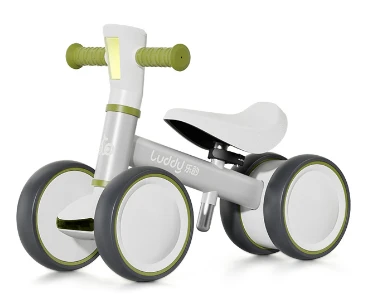
- Afrikaans
- Albanian
- Amharic
- Arabic
- Armenian
- Azerbaijani
- Basque
- Belarusian
- Bengali
- Bosnian
- Bulgarian
- Catalan
- Cebuano
- Corsican
- Croatian
- Czech
- Danish
- Dutch
- English
- Esperanto
- Estonian
- Finnish
- French
- Frisian
- Galician
- Georgian
- German
- Greek
- Gujarati
- Haitian Creole
- hausa
- hawaiian
- Hebrew
- Hindi
- Miao
- Hungarian
- Icelandic
- igbo
- Indonesian
- irish
- Italian
- Japanese
- Javanese
- Kannada
- kazakh
- Khmer
- Rwandese
- Korean
- Kurdish
- Kyrgyz
- Lao
- Latin
- Latvian
- Lithuanian
- Luxembourgish
- Macedonian
- Malgashi
- Malay
- Malayalam
- Maltese
- Maori
- Marathi
- Mongolian
- Myanmar
- Nepali
- Norwegian
- Norwegian
- Occitan
- Pashto
- Persian
- Polish
- Portuguese
- Punjabi
- Romanian
- Russian
- Samoan
- Scottish Gaelic
- Serbian
- Sesotho
- Shona
- Sindhi
- Sinhala
- Slovak
- Slovenian
- Somali
- Spanish
- Sundanese
- Swahili
- Swedish
- Tagalog
- Tajik
- Tamil
- Tatar
- Telugu
- Thai
- Turkish
- Turkmen
- Ukrainian
- Urdu
- Uighur
- Uzbek
- Vietnamese
- Welsh
- Bantu
- Yiddish
- Yoruba
- Zulu
Feb . 17, 2025 16:27 Back to list
mountain bike kids
Mountain biking for kids is more than just an outdoor activity; it's a gateway to adventure, learning, and physical development. When it comes to introducing children to this exhilarating sport, choosing the right equipment is paramount. A well-suited mountain bike can make a significant difference in their riding experience, ultimately fostering a passion for the sport. This article delves into the essential factors to consider when selecting a mountain bike for kids, ensuring both safety and enjoyment.
The braking system is a non-negotiable aspect of any mountain bike, particularly for children. Reliable brakes are crucial for safety, and there are typically two choices rim brakes and disc brakes. While rim brakes are sufficient for beginners and less demanding trails, disc brakes provide superior stopping power and performance in various weather conditions. Disc brakes are particularly effective in wet or muddy environments, providing enhanced control crucial for confident riding. As pivotal as the technical aspects are, nurturing a love for mountain biking in children also requires focusing on aesthetic appeal. Kids are more likely to be excited about riding if the bike reflects their personality. Bright colors, unique decals, and customizable features can transform a simple bicycle into a source of pride and joy. Allowing children to participate in the selection process can ignite ownership and a lasting interest in the sport. Lastly, instilling knowledge of basic bike maintenance from an early age can enhance both the child’s responsibility and enjoyment. Simple tasks such as cleaning, lubricating the chain, and checking tire pressure are fundamental skills that can extend the bike’s lifespan and performance. Moreover, understanding the basics of bike maintenance bolsters a child’s independence and problem-solving skills, important traits that extend beyond biking. In conclusion, choosing the perfect mountain bike for kids involves a comprehensive consideration of size, weight, suspension, tires, and bike aesthetics, all with an eye toward safety and enjoyment. As young riders take their first confident pedaling strokes on a well-chosen bike, they embark on journeys that nurture their physical abilities, independence, and love for the outdoors. With the right bike, a child not only learns to navigate trails but also life’s challenges, propelled by a spirit of exploration and adventure.


The braking system is a non-negotiable aspect of any mountain bike, particularly for children. Reliable brakes are crucial for safety, and there are typically two choices rim brakes and disc brakes. While rim brakes are sufficient for beginners and less demanding trails, disc brakes provide superior stopping power and performance in various weather conditions. Disc brakes are particularly effective in wet or muddy environments, providing enhanced control crucial for confident riding. As pivotal as the technical aspects are, nurturing a love for mountain biking in children also requires focusing on aesthetic appeal. Kids are more likely to be excited about riding if the bike reflects their personality. Bright colors, unique decals, and customizable features can transform a simple bicycle into a source of pride and joy. Allowing children to participate in the selection process can ignite ownership and a lasting interest in the sport. Lastly, instilling knowledge of basic bike maintenance from an early age can enhance both the child’s responsibility and enjoyment. Simple tasks such as cleaning, lubricating the chain, and checking tire pressure are fundamental skills that can extend the bike’s lifespan and performance. Moreover, understanding the basics of bike maintenance bolsters a child’s independence and problem-solving skills, important traits that extend beyond biking. In conclusion, choosing the perfect mountain bike for kids involves a comprehensive consideration of size, weight, suspension, tires, and bike aesthetics, all with an eye toward safety and enjoyment. As young riders take their first confident pedaling strokes on a well-chosen bike, they embark on journeys that nurture their physical abilities, independence, and love for the outdoors. With the right bike, a child not only learns to navigate trails but also life’s challenges, propelled by a spirit of exploration and adventure.
Next:
Latest news
-
The Ultimate Kids' Four-Wheeler Experience
NewsJul.09,2025
-
The Ultimate Guide to Mountain Bikes: Gear Up for Your Ride
NewsJul.09,2025
-
The New Age of Cycling: Electric Bikes for Every Rider
NewsJul.09,2025
-
The Best Kids Bicycles: Ride in Style and Safety
NewsJul.09,2025
-
The Best 3-Wheel Scooters for Kids: Fun, Safety, and Adventure
NewsJul.09,2025
-
Revolutionize Your Ride: Affordable Electric Bikes
NewsJul.09,2025
-
Finding the Perfect Mountain Bike for Every Rider
NewsJul.09,2025



